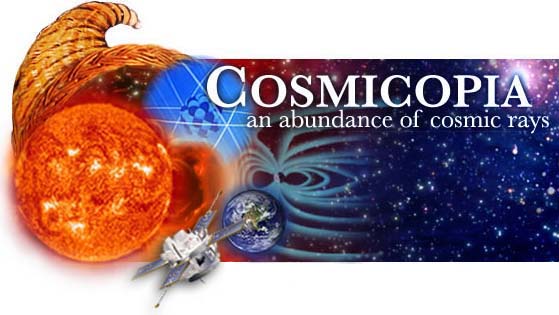
Ask Us
Space Physics:
Basics
Where is Space?
I have a question that is simple, yet to me quite complex; perhaps you can help: Where is space?The question is very simple, and so is the answer: Space is everywhere.
Dr. Louis Barbier
Does Space End?
Does space ever end?Whether space ever ends is a hard question. There is a limit to the space that we can see, because if there is stuff beyond 15 - 20 billion light years (the age of the Universe) the light from there hasn't reached us yet. So we don't know.
Dr. Eric Christian
Why is it Dark in Space?
Why is it dark in space?The reason it is dark in space actually has to do with the fact that the Universe we can see is finite (has limits), either finite in size or age. They are essentially the same thing because the finite age of the Universe (15 - 20 Billion years) means that light from stars furthur away than 15 to 20 Billion light years hasn't reached us yet. So the Universe looks to be 15 to 20 Billion light years in radius, even if it's bigger.
The fact that the sky is dark is known as Olber's paradox. If the Universe was infinite, there would be a star in every direction, and the sky would be uniformly bright. Instead the stars and light are spread out enough that it is dark.
There's also the simple explanation at our sister site, Imagine the Universe!
Dr. Eric Christian and Beth Barbier
Cosmic Distances
How do you calculate the distance from a planet to a star?It sounds like this is out of our area of expertise or interest. But you can learn about how distances to stars and other cosmic objects are determined by going through the Cosmic Distance Scale.
Beth Barbier
(August 2001)Light Year
What is a light year?A light year is the distance light travels in one Earth year, or about 1013 km (10,000,000,000,000 km).
Dr. Eric Christian
Inches in a Light Year
How many inches are in a light year?1 light year = distance light travels in 1 year in a vacuum = 9.46 x 1017 cm = 3.72 x 1017 inches (2.54 cm per inch).
Dr. Louis Barbier
Big Bang and Religion
What if the energy driving and directing the Big Bang was God? The Big Bang theory does not seem to account for the source of any energy/matter. What if it derived from a God in the process of creating a Universe and His method was the Big Bang?Your question has come to NASA, and I'm sure you know that we answer scientific questions, not religious ones. But this question has been addressed by our sister site, Imagine the Universe!.
Beth Barbier
Big Bang Explosion
Does the "Big Bang" mean that the Universe started out as an extremely large supernova-like event?Other than the fact that a supernova and the Big Bang are both "explosions", there is little similarity. Cosmic Mystery Tour at UIUC gives a definition of the Big Bang, and Timeline of the Universe at NASA JPL talks about what scientists believe happened in the time immediately afterward.
Dr. Eric Christian and Beth Barbier
Big Bang and Grand Unified Theory
I heard that scientists are working on a "Grand Unified Theory" that would explain everything. However, isn't the Big Bang theory pretty much a "theory of everything?"No, the Big Bang is just a theory on the origin of the universe. The Grand Unified Theory attempts to combine the four forces that are known (gravity, electromagnetism, strong nuclear, and weak nuclear) into one theory. As yet, scientists haven't been able to do this.
Dr. Eric Christian
(May 2002)Electricity and Magnetism in Space
Does electricity play an organizing role in space? Astronomers see magnetism everywhere but rarely have I seen mention of the electric currents that must be present to power them.- Magnetic fields are due to currents. The currents can occur over
vast scales, intermediate scales very easy for a human to grasp, or
over very minute scales. Currents are just moving charge, and if there
is a net motion of charge, there is a current.
- Gravitational force seems to give structure to the universe and
bind together what is bound on the largest of scales. There are
several reasons why gravity dominates and not electric or magnetic
fields.
The first is that magnetic forces vary as the inverse of distance cubed, while the others vary as the inverse of distance squared, so magnetic forces are the shortest range of the three.
Another thing to consider is that electric forces can both attract and repel. A positive charge tends to become surrounded by negative charges. From a distance, they neutralize one another and no net charge is seen. In plasmas this is called Debye shielding, and over distances bigger than a surprisingly small distance (Debye length), one does not observe the build-up of charge. This tends to cancel electric forces at these distances.
Nothing neutralizes gravity. So gravity is left to have its way over the vast distances of space.
Let's think about what creates a current. Two things cause currents to flow: separation of charge and electromotive force via Faraday's Law. The latter can be used to create separation of charge, as when you charge a battery. Separation of charge in space can be accomplished, but it is difficult. Many of the currents that flow in space are the result of an electromotive force. When you consider that a conducting fluid, such as plasma, will convect the magnetic field and carry it with the flow, it isn't hard to imagine that the magnetic field can be rapidly changing at any point in space and can become quite complex. So are the currents that support the fields.
In magnetospheric physics, there are two schools. One school attempts to understand the complex dynamics of the magnetosphere by specifying the currents and the other by way of the magnetic fields. If the currents are localized, we may not have spacecraft in the proper place to measure them. Since the magnetic fields fill space, it is more likely that we can study them, in an attempt to better understand the currents that produce them. Add to that the difficulties in measuring currents in space, and you may begin to appreciate why so many people choose to address the magnetic fields and not the currents that produce them. However, the current approach has a strong following in magnetospheric physics.
Let me recommend a book to you: Eugene Parker's "Conversations on Electric and Magnetic Fields in the Cosmos". It is very good, and he tackles exactly the problem you pose. Gene is in many ways the father of modern space physics, and while he is now retired, he speaks and writes wonderfully. The book is excellent, but it is advanced.
I've offered you my prejudicial view of why people talk more about magnetic fields than the currents that produce them. One thing is true -- you can't have one without the other. You need to decide which half of the pair will give you the information you need, and then decide how to get at it. It's a complicated subject.
Dr. Charles Smith
(August 2008)- Magnetic fields are due to currents. The currents can occur over
vast scales, intermediate scales very easy for a human to grasp, or
over very minute scales. Currents are just moving charge, and if there
is a net motion of charge, there is a current.
Cosmic Background Radiation vs. Cosmic Rays
Is there a difference between cosmic rays and cosmic background radiation?Cosmic rays are particles - the nuclei of elements in the periodic table. They have nothing to do with the cosmic microwave background. The cosmic background radiation is the thermal radiation left over from the Big Bang - it consists of photons only - not particles. The only thing they have in common is the word "cosmic". Please visit the COBE home page for more on the cosmic background.
Dr. Louis Barbier
Temperature of the Universe
What is the approximate temperature of the Universe, and how can it be calculated?The entire Universe is filled with the remnants of the Big Bang, in the form of photons (electromagnetic packets). They have cooled down to about 2.7 Kelvin or 2.7 degrees above absolute zero (-270.7 degrees Centigrade). So this is the temperature of space. It can be calculated from the expansion of the Universe, and it has been measured.
You can learn more about the COBE mission that measured this on the TopHat web site.
Drs. Eric Christian and Louis Barbier
Why is Space So Cold?
I'm in the fourth grade. Why is space so cold if there are so many stars?That is a question that scientists thought about hundreds of years ago. The answer is that space is cold for the same reason the night sky is dark.
Stars give off both heat and light. The night sky is dark because, although there are billions of stars, there are many more directions in the sky that don't point to stars than do point to stars. So you get a dark sky because the sky is mostly dark with only many small points of light.
The dark parts of the sky are also cold (2.7 degrees above absolute zero). So in space you get a sky that is mostly cold with only many small points of heat. That still adds up to very cold.
Dr. Eric Christian
Approaching Absolute Zero
The Universe gets colder because it's expanding, but it can't get to 0 o K, can it?Absolute zero cannot be obtained, and the approach to it will be very, very slow.
Dr. Eric Christian
Quasars
Is there such a thing as a quasar?Yes, quasars exist. You can find out more about them and similar objects at our sister site, Imagine the Universe!
Dr. Eric Christian
Gravity Waves
What are gravity waves? I understand that someone won the Nobel Prize for discovering gravity waves. Gravity can be illustrated by taking a heavy object and placing it on an elastic fabric; the more the fabric curves, the stronger the gravity. But where do the waves come in?Gravity waves are ripples on the elastic fabric of space. If you hit or ring that heavy object, a ripple will move outward. This is a gravity wave, and it travels at the speed of light. Hulse and Taylor won the Nobel prize in 1993 for discovering a binary pulsar whose period was slowing down exactly as predicted if the pair was losing energy by giving off gravity waves.
Dr. Eric Christian Back to "Ask Us" directory
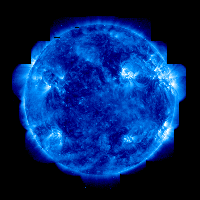
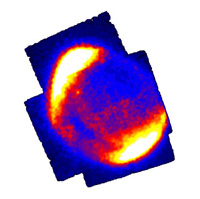
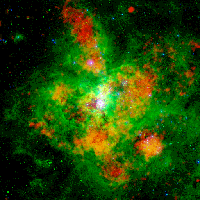

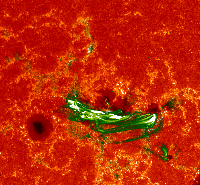
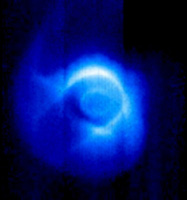
Questions and comments to: cosmicopia@cosmicra.gsfc.nasa.gov
Curator: Dr Eric R. Christian, NASA
Responsible NASA Official: Dr Eric R. Christian
Privacy Policy and Important Notices

HOME
In the News
History
Ask Us
Great Links
Glossary
Site Map
Search NASA